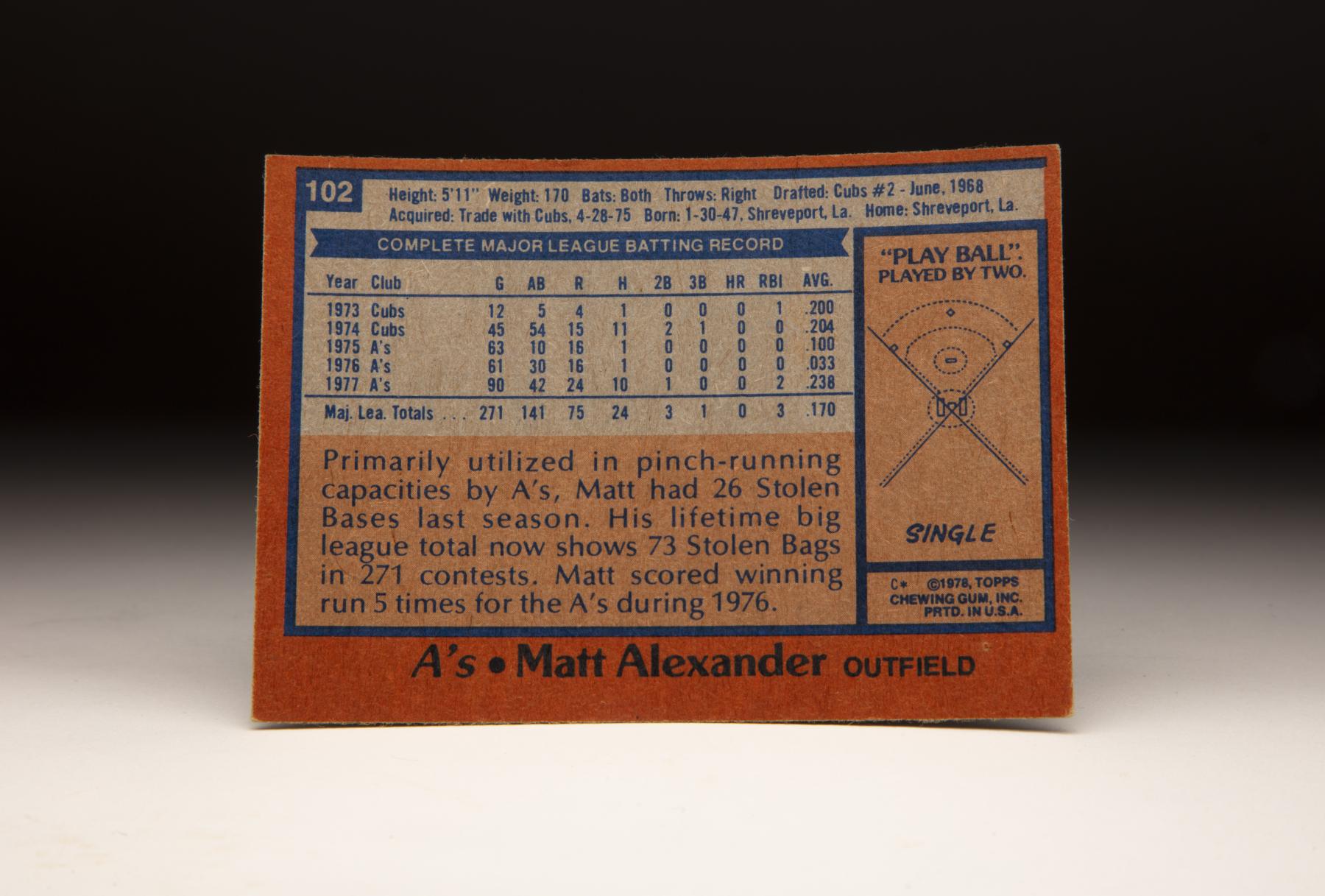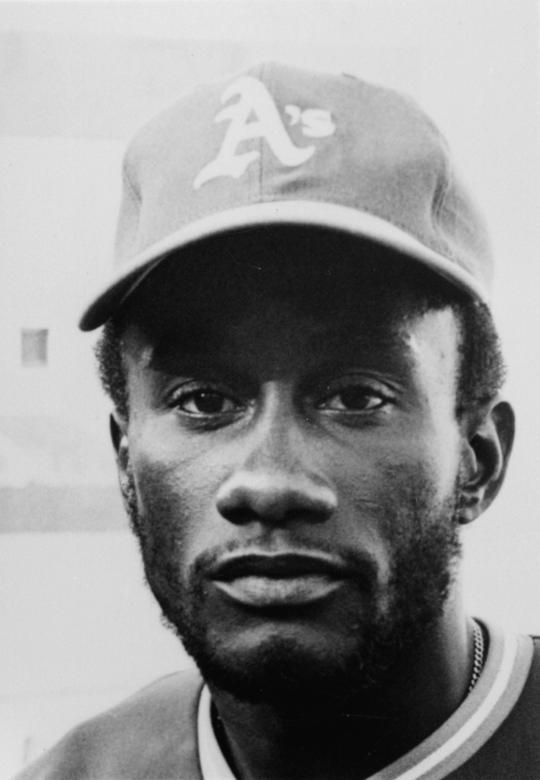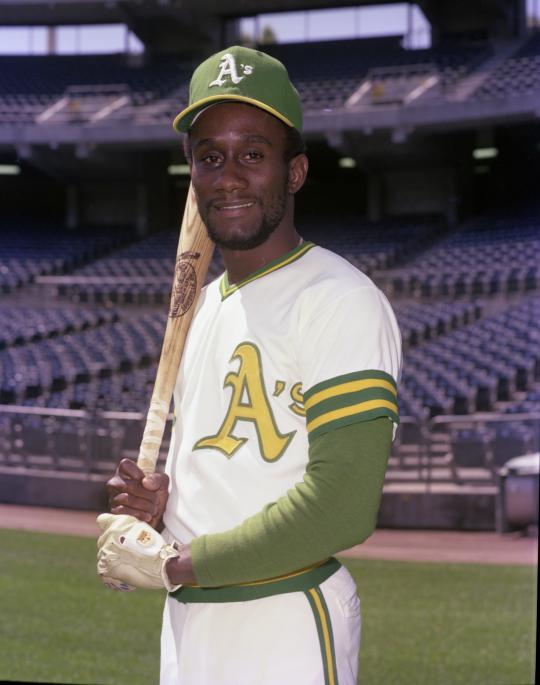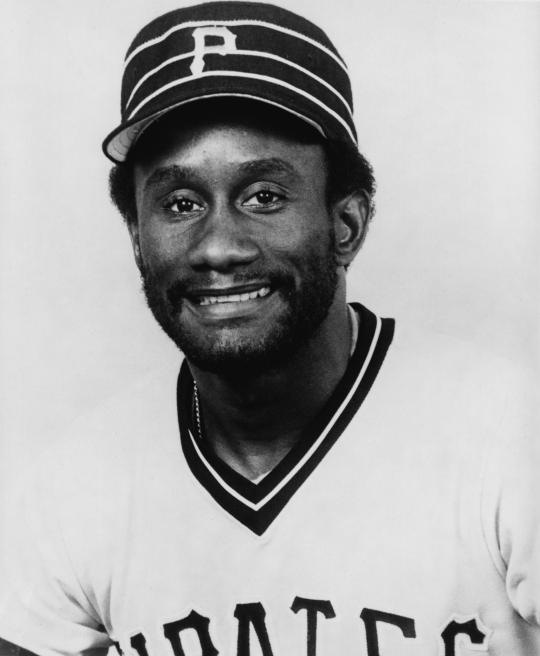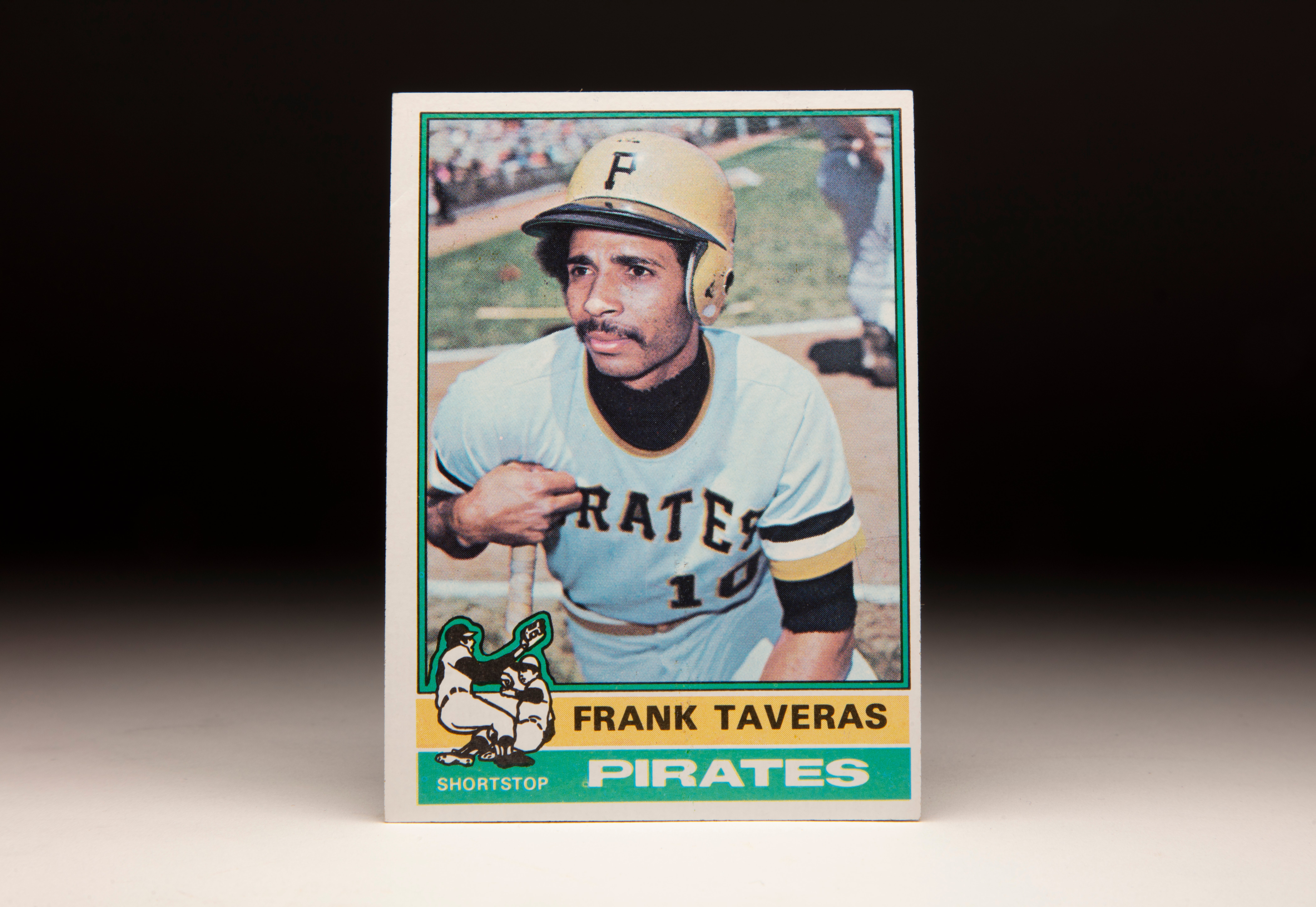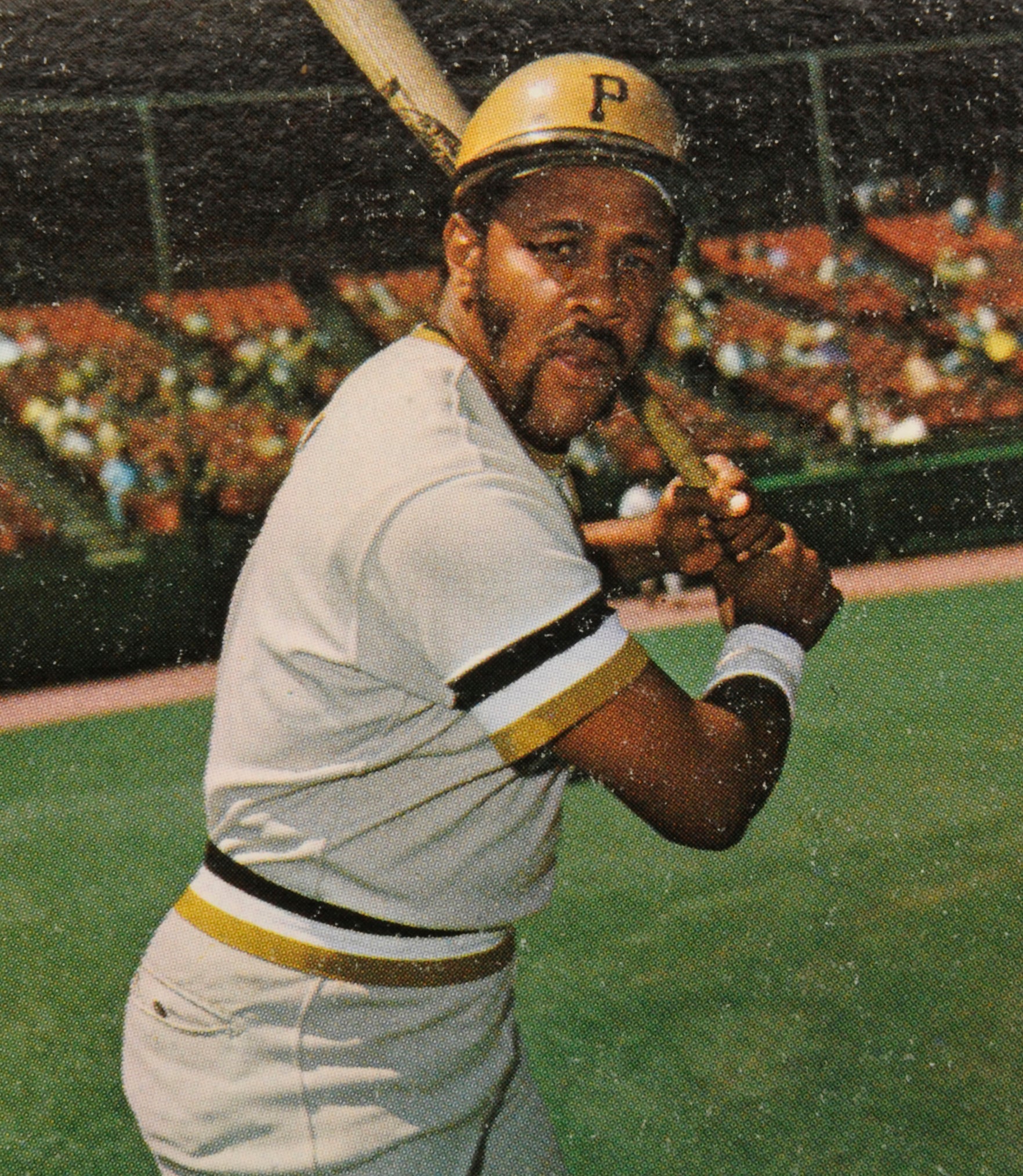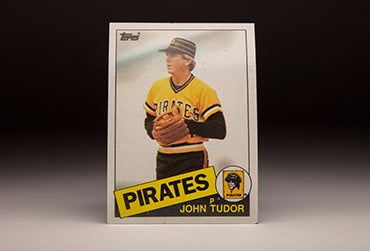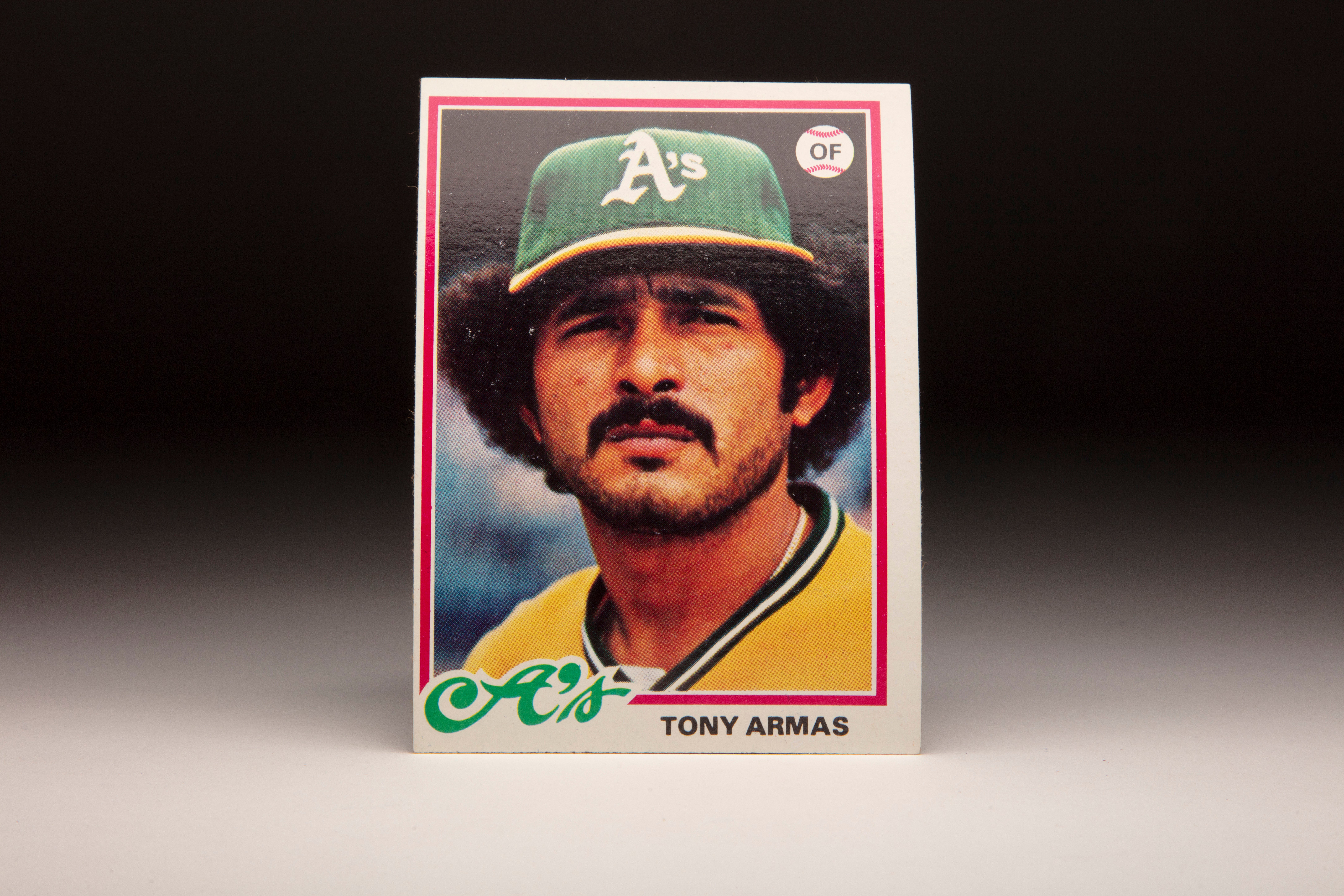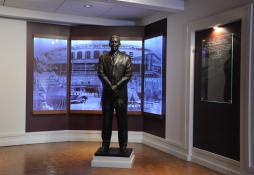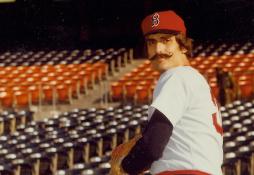#CardCorner: 1978 Topps Matt Alexander
He was the most successful pinch runner in big league history, totaling 91 steals and 89 runs scored in a role where he never came to the plate. And he was a World Series champion, hitting a robust .538 for the 1979 Pittsburgh Pirates (albeit in only 13 at-bats).
But above all, Matt Alexander was a specialist – one who did his job as well as anyone ever has.
Pirates Gear
Represent the all-time greats and know your purchase plays a part in preserving baseball history.
Hall of Fame Membership
There is no simpler, and more essential, way to demonstrate your support than to sign on as a Museum Member.
Born Jan. 30, 1947, in Shreveport, La., Alexander fell in love with baseball during his formative years but also played football and basketball at Bethune High School. As a pitcher, Alexander once outdueled Vida Blue in high school and led Bethune to a state title in 1965. He got a look from the Orioles at a tryout camp following high school but opted to enroll at Grambling University, located an hour from his home.
“I didn’t think I was really ready,” Alexander said of his choice to put off pro baseball.
Now a full-time hitter, Alexander played with future big leaguer Ralph Garr at Grambling and was timed at 3.1 seconds to first base – beating the equally speedy Garr. He earned all-conference honors in both his sophomore and junior seasons, hitting better than .300 each time.
Selected by the Cubs in the second round of the 1968 MLB Draft on the advice of scout Buck O’Neil following his junior season, Alexander signed – eschewing the counsel of Grambling president Ralph Waldo Emerson Jones, who also served as Grambling’s baseball coach for decades and told Alexander he should return to school for his senior season.
“All the credit for my success in baseball goes to Prez (Jones),” Alexander told the Shreveport Journal of his time at Grambling.
Alexander was assigned to the Caldwell Cubs of the Pioneer League after being drafted and hit .261 in 35 games. The next year, Alexander – being groomed as an infielder – started at Class A Quincy of the Midwest League and hit .274 with 23 steals and a .374 on-base percentage in 71 games before earning a promotion to Double-A San Antonio, where he hit .303 in 30 games.
But with his college days behind him, Alexander’s draft status changed. The Cubs helped steer him toward the Navy, and he signed up as a volunteer and spent most of two years on active duty status in Hawaii while also being able to play ball for service teams.
He was discharged in late 1971 and was assigned to Double-A Midland of the Texas League in 1972, where he hit .270 in 124 games, leading the league in steals with 38 while being caught only three times.
“I’m 25 years old and have only two years of pro ball behind me,” Alexander told the Shreveport Journal in 1972. “I need to be in the big leagues now. I don’t have any time to waste.”
Alexander gained valuable experience in the Mexican League with the Yaquis of Ciudad Obregon following the season, then was assigned to Triple-A Wichita in 1973. After hitting .309 with 20 steals in 106 games, Alexander earned a call-up to the Cubs – debuting on Aug. 23, 1973, as a pinch-runner for Ron Santo in a game against the Reds. He scored the game-tying run on a Paul Popovich single in the 10th inning in a game Chicago would win 4-3.
Finley traded Tanner to the Pirates following the season in exchange for catcher Manny Sanguillén, and new manager Jack McKeon kept both Alexander and Lintz on the Opening Day roster in 1977. But Alexander’s ability to play in the field and make a decent showing as a switch-hitting batter led him to more opportunities than Lintz. Alexander appeared in a career-high 90 games that year, batting .238 with 26 stolen bases and 24 runs scored.
For a couple week-long stretches in 1977, Finley had managers McKeon and Bobby Winkles (McKeon was replaced 53 games into the season) lead off Alexander in road games. Alexander was listed as the shortstop, but after his one at-bat, light-hitting Rob Picciolo would replace Alexander in the field. It was a Finley innovation to try to manufacture the first run of the game.
The strategy worked two out of 12 times.
“I never really got a chance with the Cubs,” Alexander told the Times of Shreveport, La., in 1978. “I know I will never be a star. I will always be a runner. But I’ve got speed, I’m a switch hitter, play infield, play outfield. I’m very useful to the ballclub.”
But in the spring of 1978, Alexander contracted hepatitis – possibly while playing winter ball in Mexico – and wound up in the hospital. A surgical procedure removed an intestinal blockage. On March 31, the Athletics released Alexander.
While regaining his strength, Alexander attended barber college for five months in Shreveport. Less than a month shy of a big league pension, Alexander found no offers until the Pirates – managed by Chuck Tanner – signed him on Sept. 1, 1978, when the rosters expanded for the stretch drive. Alexander played in seven games that month, all as a pinch-runner, and scored twice – including a 14th-inning run against the Cubs Sept. 21 when he ran for Rennie Stennett, stole second against Bruce Sutter and scored on the play when his speed forced the Cubs into two errors.
Alexander also recognized that his days in the big leagues were coming to an end.
“I feel right now that time is running out for me,” Alexander told the Shreveport Journal late in the 1980 season. “But I’ve been fortunate to be blessed with a good body.
“Sometimes you can get depressed and frustrated. You’re not going to make a lot of money being a pinch-runner. But I’d like to leave a good mark on general managers and managers that I did a good job while I was here and helped them win a championship ballgame.”
Outrighted to Triple-A Portland following the season, Alexander began the 1981 campaign in the minors but was recalled to Pittsburgh in May. After five games, he was returned to Portland – then came back in September and played in the final 10 games of his big league career, finishing the season with three steals in 15 games for the Pirates.
In camp with the Pirates in the spring of 1982, Alexander had his contract sold to the Mexico City Tigers on March 29. He hit .271 with 36 steals for Mexico City in 106 games in 1982, then batted .312 with 73 stolen bases in 116 games for the Tigers a year later. After a handful of games in the Mexican League in 1984, Alexander’s pro career came to an end – save for a short appearance with the Winter Haven Super Sox of the Senior Professional Baseball Association in 1989.
“I never thought I’d be a major league ballplayer,” Alexander told the Shreveport Journal. “I worked hard and never gave up on myself when I was in the minor leagues. You just have to be in the right place at the right time.”
For nine seasons, Alexander was in the right place – the big leagues. He made just 195 plate appearances in those seasons, becoming the only non-pitcher in history with at least 350 games played and fewer than 200 plate appearances. He totaled 103 stolen bases and 111 runs scored.
“There’s tremendous pressure on me to run,” Alexander told the Times of Shreveport, La., during his career. “If I get thrown out that night, I’ve got to wait 24 hours to do it again. I don’t get but one chance, even though everybody in the ballpark knows you’re going to run.
“But pinch running has done a lot of things for me and my family.”
Craig Muder is the director of communications for the National Baseball Hall of Fame and Museum


